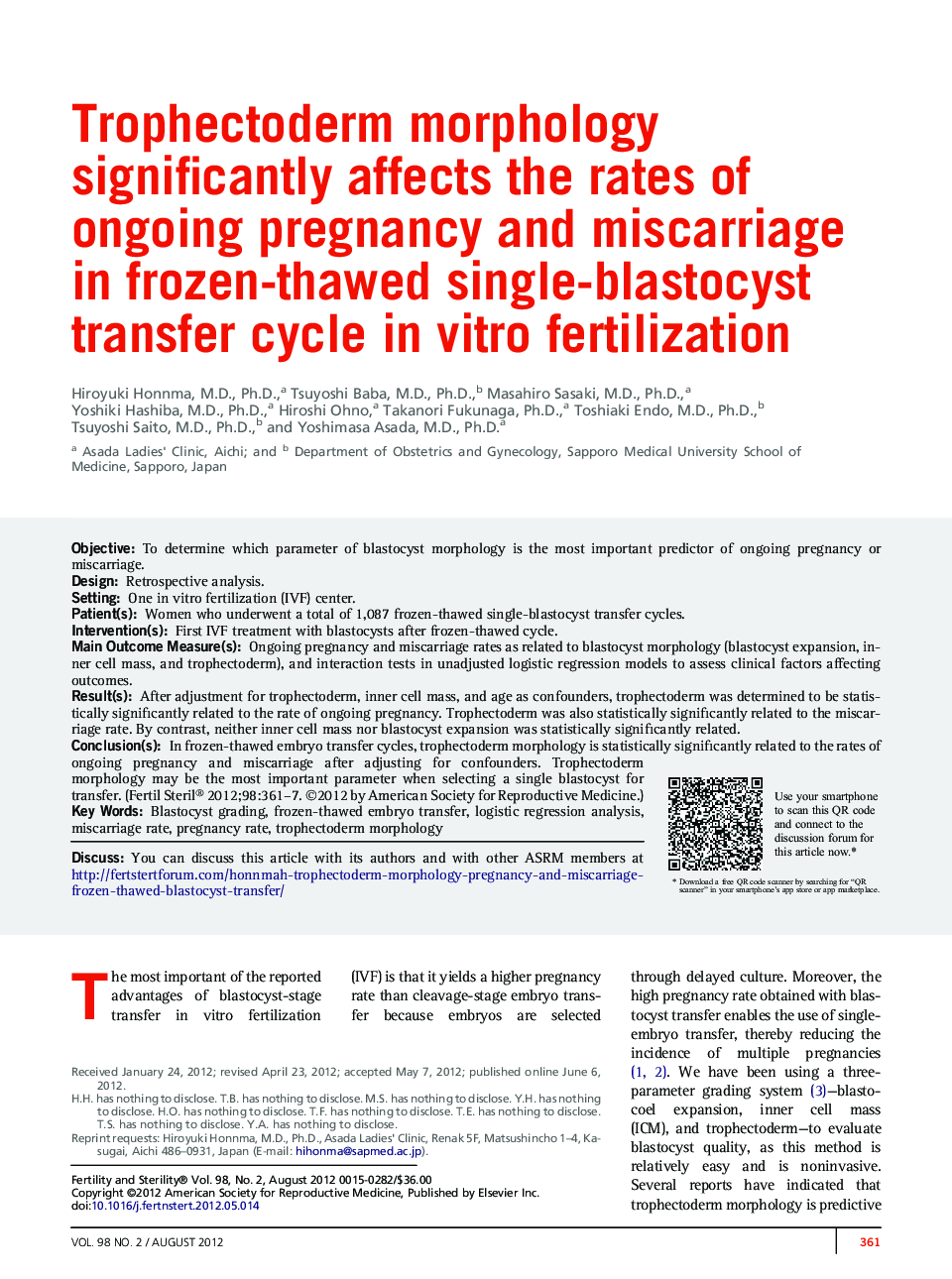| کد مقاله | کد نشریه | سال انتشار | مقاله انگلیسی | نسخه تمام متن |
|---|---|---|---|---|
| 3939902 | 1253572 | 2012 | 7 صفحه PDF | دانلود رایگان |

ObjectiveTo determine which parameter of blastocyst morphology is the most important predictor of ongoing pregnancy or miscarriage.DesignRetrospective analysis.SettingOne in vitro fertilization (IVF) center.Patient(s)Women who underwent a total of 1,087 frozen-thawed single-blastocyst transfer cycles.Intervention(s)First IVF treatment with blastocysts after frozen-thawed cycle.Main Outcome Measure(s)Ongoing pregnancy and miscarriage rates as related to blastocyst morphology (blastocyst expansion, inner cell mass, and trophectoderm), and interaction tests in unadjusted logistic regression models to assess clinical factors affecting outcomes.Result(s)After adjustment for trophectoderm, inner cell mass, and age as confounders, trophectoderm was determined to be statistically significantly related to the rate of ongoing pregnancy. Trophectoderm was also statistically significantly related to the miscarriage rate. By contrast, neither inner cell mass nor blastocyst expansion was statistically significantly related.Conclusion(s)In frozen-thawed embryo transfer cycles, trophectoderm morphology is statistically significantly related to the rates of ongoing pregnancy and miscarriage after adjusting for confounders. Trophectoderm morphology may be the most important parameter when selecting a single blastocyst for transfer.
Journal: Fertility and Sterility - Volume 98, Issue 2, August 2012, Pages 361–367